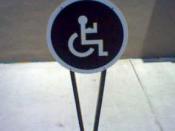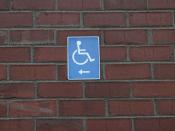People with disabilities have been portrayed as abnormal, deserving of pity and not as individuals who are entitled to enjoy the same opportunities to live a full and satisfying life as other members of society. This approach has also been accompanied by a way of thinking about disability (known as the 'medical model' of disability, among other names) which has been described in the following terms:
"Disability tends to be couched within a medical and welfare framework, identifying people with disabilities as ill, different from their non-disabled peers, and in need of care. Because the emphasis is on the medical needs of people with disabilities, there is a corresponding neglect of their wider social needs. This has resulted in severe isolation for people with disabilities and their families."
Finkelstein (1991) regrets the wide acceptance of the medical model, but views it as a component of a broader model of which he defines as the 'social death' model of disability.
He critiques the work of Miller and Gwynne (1972) for adopting: 'the simplistic assumption that to be permanently disabled means that the individual is intrinsically non-equal to their peers (i.e. without help, a no-being)' (p. 26).
Brisenden (1986) also opposes the medical model and argues that the emphasis on clinical diagnosis proceedes to a 'partial and inhibiting view of the disabled individual, (p. 173). He says that this model ignores the fact that frequent hospitalization and medical treatment are in itself disabling factors about being disabled. He further suggests that the individual should be allowed to determine how a specific medical suugestion fits into the overall medical economy of their life (2000,p. 25).
In recent years, however, this approach has been superseded by a broader understanding of disability, referred to as the 'social model'. This analysis recognises that the circumstances of...


